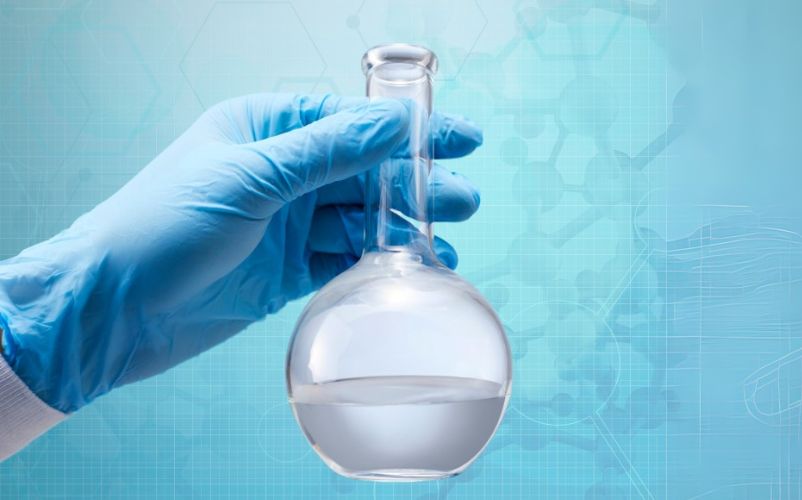Understanding the difference between sterility, bioburden, pyrogen, and bacterial endotoxin testing
To ensure patient safety, parenteral pharmaceutical drugs and medical devices should be free from contamination with both living microorganisms and pyrogens, including endotoxins. Accordingly, their manufacturing processes should comply with strict regulatory and quality control requirements. Bioburden, pyrogen, and endotoxin testing are important tools for the development and manufacturing of sterile and pyrogen-free parenteral pharmaceutical drugs and medical devices. However, there are clear distinctions between the concepts of sterility, bioburden, and pyrogen and endotoxin testing.
Sterility designates a state, in which all living microorganisms, including bacteria, viruses, and fungi, have been eliminated or inactivated from a product or environment. Parenteral pharmaceutical drugs and medical devices should be sterile (free of any living microorganisms). To achieve this goal, they may undergo a process of sterilization (elimination of microorganisms), which may involve autoclaving, dry heat sterilization, filtration, gamma irradiation, or ethylene oxide sterilization. When sterilizing heat sensitive products, precautions should be taken to prevent heat-induced damage during sterilization. Filtration and cleanroom environment can be used in such cases. Cleanrooms are designed to minimize the risk of contamination and maintain controlled temperature, particulate levels, and humidity.
The 14-day incubation test is considered the gold standard for sterility testing. However, it has limitations, such as its long lead time and potential false positives for cellular products. Alternative methods for sterility testing may help to solve these issues. Notably, a 1-day sterility alternative would be ideal for many products that are currently released “at risk.”
In contrast, the concept of bioburden indicates the number of viable microorganisms that are present in a non-sterile product or environment prior to sterilization. Evaluating the bioburden of a product enables scientists to assess the effectiveness of a subsequent sterilization. Sterilization ensures that viable microorganisms are eliminated from a product or environment. However, sterilization may not be sufficient to remove pyrogens, including endotoxins, which are very heat resistant.
Pyrogens are molecules that, if they get in contact with a person’s bloodstream, can cause fever, inflammation, and even septic shock. Bacterial endotoxins, which are lipopolysaccharides found in the outer membrane of gram-negative bacteria, are especially strong pyrogens. They are primarily released by gram-negative bacteria during cell lysis and can lead to severe adverse reactions, if they gain access to the bloodstream. However, there are also non-endotoxin pyrogens, such as peptidoglycans and lipoteichoic acid from gram-positive bacteria and glucans and mannans from fungi.
Due to the high heat resistance of pyrogens, their elimination may be very challenging. The process of pyrogen elimination is known as depyrogenation and may involve procedures including dry heat sterilization, filtration, or chemical inactivation. For liquid products that cannot be readily depyrogenated, manufacturing in a pyrogen-free environment is imperative.
Testing methods for the identification of pyrogen contamination, including bacterial endotoxin contamination, should comply with strict guidance by regulatory agencies.
Some testing methods detect both endotoxin and non-endotoxin pyrogens. Historically, the Rabbit Pyrogen Test was first introduced for pyrogen testing, but it has shortcomings, including its variability, limited sensitivity, and concerns about animal welfare. This led to the development of the monocyte activation test (MAT). The MAT has become widely implemented for the detection of both endotoxin and non-endotoxin pyrogens due to its convenient in vitro format and high sensitivity and specificity. FUJIFILM Wako Pure Chemical Corporation has developed a reagent for peptidoglycan testing, which can be used as a solution for some pyrogen testing needs, as well as LumiMAT™, which is a rapid and simple MAT.
Tests specific for bacterial endotoxin testing, like the Limulus Amebocyte Lysate (LAL) assay, have been the historic alternative to pyrogen testing, as endotoxin is the most potent pyrogen and the one that is most resilient to inactivation. For bacterial endotoxin testing, the LAL assay has been established as the gold standard due to its high accuracy, sensitivity, and specificity. It can be conducted both as a semi-quantitative gel-clot assay and as a quantitative turbidimetric or colorimetric assay. In addition, since the traditional LAL assay uses lysate derived from the amebocytes of the Limulus horseshoe crab, synthetic alternatives for endotoxin testing have been established. FUJIFILM Wako has developed a line of sensitive and specific LAL reagents and an rCR synthetic alternative, which is now a compendial method in the United States.
Parenteral pharmaceutical drugs and medical devices should be both sterile and pyrogen free. The appropriate use of bioburden, pyrogen, and endotoxin testing plays an important role in achieving this goal.



